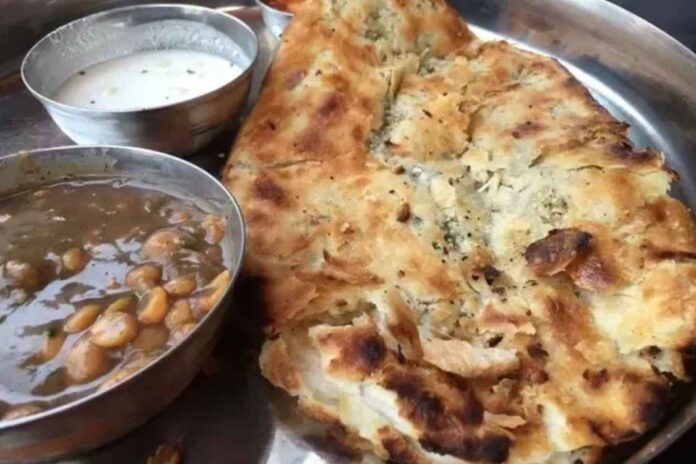In this blog we are going to tell you about Difference Between Naan and Kulcha, so read this blog carefully to get the complete information.
What exactly is Naan?
This is a flatbread that is baked either in a tandoor (charcoal-based clay earthenware) or in an oven. It’s an Indian bread made using leavened wheat flour, milk, and yogurt, as well as yeast. The procedure for cooking includes combining the leavening chemicals and salt, then kneading the dough to form it. After that, the dough is divided into little balls. After that, they’re placed in the oven. Nigella seeds can be used to season it.
What exactly is Kulcha?
This is a maida-based flatbread that is popular in India. Spices and mashed potatoes are put into the dough to make kulcha. After that, the balls are formed and placed in the oven or tandoor.Baking powder is used instead of yeast to leaven kulcha.
The fundamental distinction between kulcha and naan is that kulcha is an Indian flatbread prepared with maida or refined white flour, whereas naan is a sort of flatbread made with whole wheat flour.Wheat flour is used to make Indian flatbread. Furthermore, unlike kulcha dough, naan dough is leavened with yeast and yogurt or milk, resulting in a light, airy texture.The texture is lighter and softer. Kulcha and naan are two classic Indian foods that are regularly prepared. If you aren’t already, Due to their similar look, an Indian eatery may find it difficult to distinguish between kulcha and naan. However,The components used in these two flatbread variants differ.
Similarities: It’s a toss-up between kulcha and naan. Indian flatbreads such as naan and kulcha
Cooks may load naan and kulcha with various spices and potatoes. Both of these flatbeds are served with curries. Spreading butter or ghee all over the flatbreads also improves their flavor.
What is the difference between a kulcha and a naan?
Definition: Kulcha is an Indian flatbread made with maida or refined white flour, whereas naan is a wheat-based flatbread.
Ingredients: We produce kulcha dough using maida flour and salt, but we use wheat flour, yeast, milk, or yogurt to make naan bread.
Shape: Traditional naans are triangular or oblong in shape, whereas kulchas are circular in shape in traditional Indian cuisine.
Various Varieties: Plain naan, butter naan, keema naan, cheese naan, garlic naan, and so on are some of the tastes offered. Gobi kulcha, aaloo kulcha, pyaaz kulcha, paneer kulcha, and cheese kulcha are some of the world’s most popular kulcha variants.
Is it softer to eat naan or kulcha?
The fundamental difference between kulcha and naan is that kulcha is an Indian flatbread prepared with maida or refined white flour, whereas naan is an Indian flatbread made with whole wheat flour. Naan, on the other hand, is a wheat-based Indian flatbread. Naan dough is also leavened, unlike kulcha dough. It’s made lighter and softer in texture using yeast and yogurt or milk.
Naan’s Origin
During the Mughal dynasty, naan was introduced to Indian cuisine. The commerce of yeast, which was a crucial element in the manufacturing of naan, was a significant milestone in the history of the dish. The bread’s smooth and light buttery flavor was the ideal complement to the rich Mughlai cuisine.Naan is one bread that humbly compliments all, whether it’s rich and creamy butter chicken or light and hearty dal makhNi is now one of the most extensively consumed flatbreads in the world.
Is maida used to make kulcha?
Kulcha is created by mixing maida flour, water, a bit of salt, and a leavening agent (yeast or old kulcha dough) by hand. dough that is extremely compact.The dough will leave little, but not much. The flour is kneaded again by hand before being smoothed out into a flat, round form using a rolling pin.
RELATED – DIFFERENCE BETWEEN GMO AND ORGANIC
Conclusion
The fundamental difference between kulcha and naan is that kulcha is made using maida while naan is made with wheat flour. If you enjoy Indian cuisine, When you go to an Indian restaurant for a classic Indian dinner, both naan and kulcha must be delicacies you appreciate.


